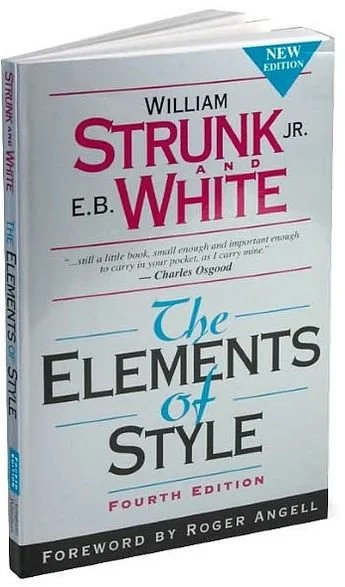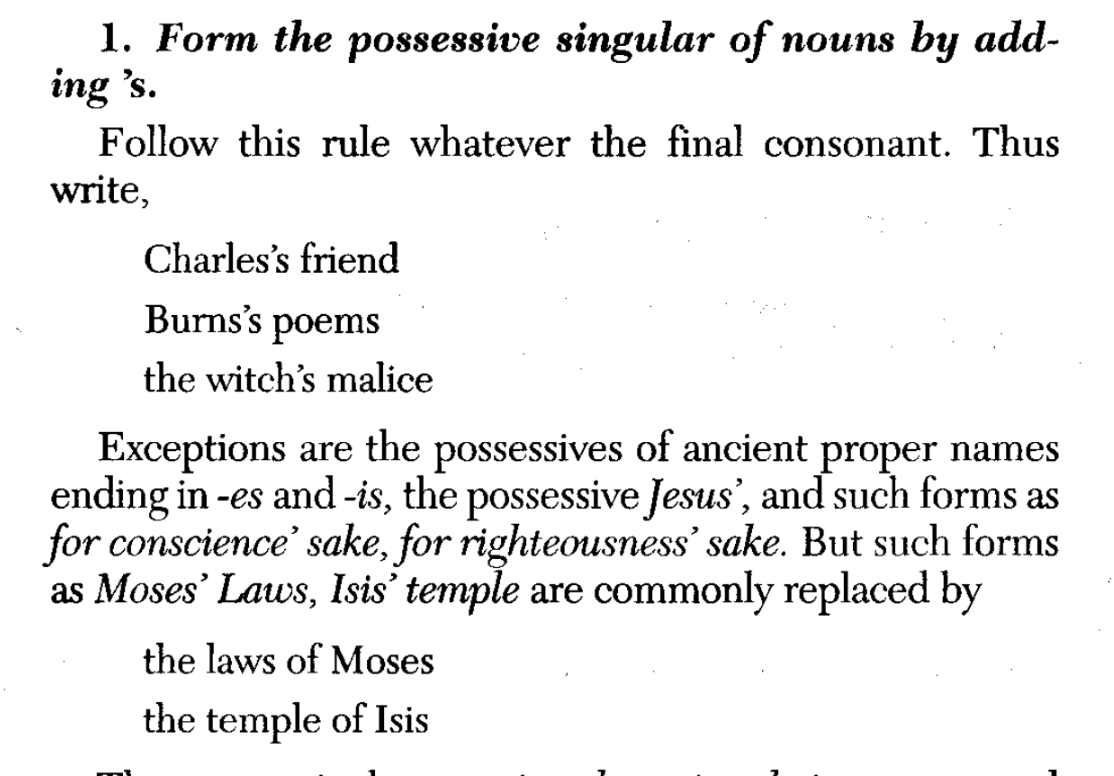Do Strunk and White still matter?
Want to improve your writing? There is no substitute for one-on-one instruction. Sign up for my writing course today!
*
Americans of a certain age — say 30 and over — might recognize the slim volume pictured above. The Elements of Style by William Strunk Jr. and E.B. White was a fixture of high school English classrooms for decades. Not quite a grammar textbook, “Strunk and White” is great for teachers who want to go over the finer points of punctuation and usage without getting into the woods with tenses, clauses, subjunctives, and the rest.
Today, however, it seems to have fallen out of use. When I distributed pdfs to my 11th and 12th grade students last year, it was the first any of them had heard of it. I wouldn’t say I was shocked, but this did make me second guess my teaching instincts. Was a book like this — a book of “rules” — too prescriptive, too nit-picky for the 21st century? Was I crushing my students’ creativity by making them second guess every comma and paragraph break?
According to a number of my students, the answer to these questions was yes, absolutely, this is even duller than Emerson. But according to me, the answer was — and is — no.
A student prepares for a quiz on The Elements of Style, Rules 1 - 11.
The Elements of Style is an easy-to-use tool for people who want to write clearly. The book’s guide to comma and semicolon usage in particular is the most intuitive I’ve found. I use Strunk and White in my classroom because it works.
But the book is also self-aware and slyly mischievous. Strunk and White do not take themselves as seriously as many readers assume. Underneath their fierce pronouncements is an awareness that language is too wild to be tamed by a set of rules, however practical. Always there will remain points of ambiguity and debate.
And yet we must beat on, boats against the current, in pursuit of correct style and usage. To do otherwise would be to give in to carelessness.
*
Instead of a systematic guide to English grammar, Strunk and White present 22 rules that help students avoid common errors. Each rule is presented with clear examples as well as the authors’ own commentary, which is acerbic yet genial, like the seemingly cold and uncompromising professor who, at the end of the semester, surprises you by bumping your grade up to an A for participation. They do all of this with a remarkable economy of words, in keeping with their own Rule #13: “Omit Needless Words.” Here’s an example, Rule 4, a relatively long entry:
Pretty good, right? Rule 4 is easy to understand, and it offers a compelling jumping off point to explain the difference between independent and dependent clauses. When presented with concrete examples as well as a rule they will be quizzed on, students are better able to grasp these abstract grammatical concepts.
Indeed, Rules 3 through 6 are Strunk and White at their best. It is here that they cover basic comma and semi-colon usage and they do so with admirable lucidity. As Strunk and White themselves say at the close of Rule 6, “Rules 3, 4, 5, and 6 cover the most important rules that govern punctuation. They should be so thoroughly mastered that their application becomes second nature.”
And yet, even in this seemingly commonsense entry, there is a strange exception at the end. Strunk and White say that one may omit the comma in cases “when the subject is expressed only once,” the connective between the two clauses is “and,” and “the relation between the two clauses is close or immediate.” If the connective is “but” the comma is still indicated.
This is a very precise and nitpicky exception, and one that feels more like a personal preference than a commonly known “rule.” More baffling still, there is an exception like this in for almost every rule, especially the first 11 which concern matters of usage. Take, for instance, the notorious Rule 1:
Skeptics have said that Rule 1 doesn’t seem like a rule at all, just an idiosyncratic preference to write, for example, “James’s prize-winning eraser collection” instead of “James’ prize-winning eraser collection.” Many say, contra Strunk and White, that either is acceptable.
Whatever one thinks of this issue, Strunk and White’s position can perhaps be accepted. What must be questioned, though, is the exception they make for “ancient proper names” like Jesus and Moses. I mean — really? On what grounds? On whose authority? When students encounter this seemingly baffling exception, they often throw their book across the room.
My view is that Strunk and White knew exactly what they were doing here. The exceptions to their rules are little hints to the reader, reminders that grammatical rules are little more than arbitrary standards, like the dress code at a country club. It’s good to know the code to prevent feeling out of place, but taking these kinds of rules too seriously would result in its own form of ridiculousness.
By adding these question-begging, hair-pulling exceptions to their neat little rules, Strunk and White invite students to push back against their authority. They open a space for dialogue in which students can decide how they feel about issues like the Oxford comma (Rule 2) and loose sentences (Rule 18). In a way, they are modeling good teaching practices.
*
Not everyone is charmed by Strunk and White. In 2015, The Washington Post published a blog post by UCLA law professor Eugene Voloch titled “Against Strunk and White’s The Elements of Style.” In this article, Voloch quotes extensively from a vitriolic takedown of Strunk and White written by Professor Geoffrey K. Pullum that was published in 2010 in the journal English Today. Here is a taste of Pullum’s jeremiad:
Wih respect to Professor Pullum, I think that White was aware of the source of his quote and the tendentiousness of his claim. The point is not that Wilde was wrong, it is that a good writer must learn to be discerning and to rely on their own wits.
Sooner or later in the course of the writing process, every student will encounter problems that their English teacher won’t be able to help them with. At these moments they must make tough choices, and their writing will be more vigorous if they do so with the conviction that their choices are correct. Whether they follow Strunk and White’s advice or not is less important than that they are paying careful enough attention to their writing on a sentence level to recognize these issues as they arise.
I myself break Strunk and White’s rules all the time. For instance, I often use “however” at the beginning of a sentence in contexts when Strunk and White would advise I use “nevertheless.” I respect their rules, but in the end I follow my own rules, which I think is the best attitude to have with this book. (And anyway, Grammar Girl says my usage of however is OK.)
*
Strunk and White did not work together on The Elements of Style. The original text was a very small guide that Professor William Strunk Jr. published himself in 1918 and distributed to his undergrad students at Cornell. One of these students, E.B. White, grew up to be a famous writer, best known for his contributions to the New Yorker and his children’s novel Charlotte’s Web. In the fifties, White’s publisher, Macmillan and Company, comissioned him to write a style guide, and instead of reinventing the wheel, White revised and expanded the book his old professor had given him.
By the time White was revising The Elements of Style for popular publication, Professor Strunk had passed on. In the introduction to the book, White explains that, in his revisions, he tried to preserve his old instructor’s voice as much as he could. He speaks of Strunk in terms that are both comic and affectionate:
It is apparent that The Elements of Style is as much a reflection of Strunk’s personality as anything else. This book expresses Strunk’s truth — his love of concise, assertive prose and clean punctuation.
Is it the only way to write? No but it is a respectable way, one developed by a professor who loved language and thought deeply about the craft of writing. Tangling with Strunk’s rules can only do a student good.
*
Want to improve your writing? There is no substitute for one-on-one instruction. Sign up for my writing course today!





